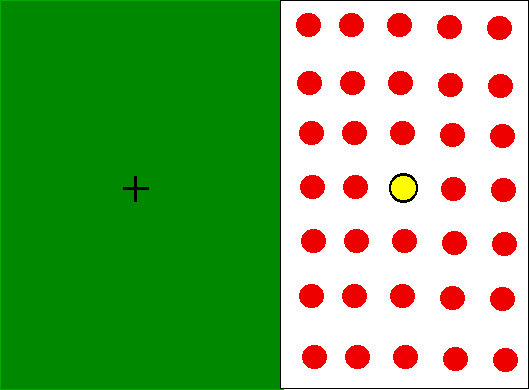Remote Ready Biology Learning Activities has 50 remote-ready activities, which work for either your classroom or remote teaching.
Serendip is an independent site partnering with faculty at multiple colleges and universities around the world. Happy exploring!

I need to think about this. Can I go back to the beginning please?
V.S. Ramachandran has a nice article called "Blind Spots" in Scientific American (May, 1992, pp 86-91). A comparison of observations discussed there (the figure on the top right of page 88) with those you have just made leads to some interesting questions. Ramachandran also discusses interesting work of his own aimed at determining where in the visual pathways "filling in" occurs (cf. Ramachandran, V.S. and Gregory, R.L. (1991) Perceptual filling in of artificially induced scotomas in human vision. Nature 350: 699-702).
The blind spot also figures in some interesting discussion about how best to talk about what the brain does, the issue being whether the brain actually "fills things in" or instead simply ignores things about which it has no information. Daniel Dennett's lively and accessible Consciousness Explained (Little, Brown and Co., 1991) has a nice discussion favoring the latter (pp 344-366).
If you'd like to explore the issues here a little further (and have Mozilla Firefox or Internet Explorer as a browser), you can use a java applet to "map" your own blindspot, giving you a better sense of how big it actually is.
(Presentation created by Paul Grobstein. Thanks to Heather Billik, BMC '96, for raising questions which led to the figure here, and to Lindsay Welch, BMC '98, for worrying about its relation to Ramachandran's paper.)
| Brain and Behavior Forum | Brain and Behavior | Serendip Home | |